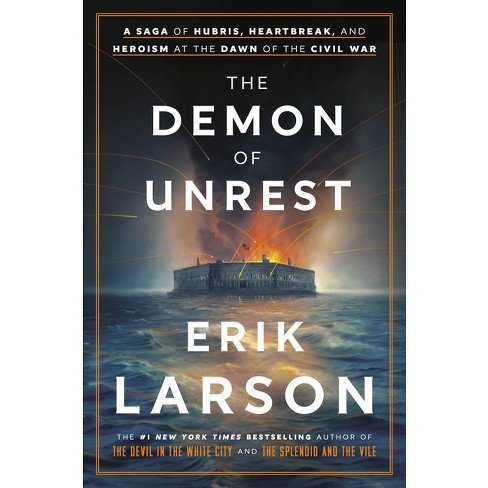REVIEW: Ali Smith's 'Gliff' is a Dystopian Novel that Focuses on the Kids
/The Protagonists are a Pair of Siblings who are Forced to Fend for Themselves
Read MoreThe Protagonists are a Pair of Siblings who are Forced to Fend for Themselves
Read MoreThe Author Imagined the Wartime History of a Building She Lived In
Read MoreFor Seaman, books are touchstones, companions, and portals to discovery.
Read MoreAnd Her Stunning New Novel, ‘Your Presence is Mandatory’
Read MoreA story about power, economic inequality, and the struggle to imagine a future less dependent on fossil fuels
Read MoreTalking about the engaging, propulsive new novel ‘Cadenza’ — and more
Read MoreA story of aching for human connection, across a wide world
Read MoreHe Brilliantly Takes on Some of Our Greatest Fears about What the Future May Hold
Read MoreHe Was the First President to be the Recipient of a Presidential Transfer of Power
Read MoreShe Was Derided as “Plastic Pat,” but Fought Behind the Scenes for Her Causes — Including Women’s Rights
Read MoreHe Appeared on Long Island with a Business Card that Read “George Gordon Moore, Capitalist”
Read MoreA Story of Challenges, Hidden Family History, and Questions about Belonging
Read More
The Demon of Unrest: A Saga of Hubris, Heartbreak, and Heroism at the Dawn of the Civil War by Erik Larson
Crown 592 pp.
Erik Larson, the best-selling author of The Splendid and the Vile, Devil in the White City, In the Garden of Beasts and other acclaimed works of popular history, has written a new book in which he examines six months of the Civil War from the election of Lincoln to the surrender of Fort Sumter. This was a period of time when significant figures on both sides often showed little understanding of their counterparts, often with dire results. These include, most importantly President Abraham Lincoln, Secretary of State William H. Seward and President of the Confederacy Jefferson Davis.
Abolition had been a major issue in the North since early on in the 19th century, enraging Southerners. Most southern religious traditions held that Blacks were inferior. So did many scholars, educators, journalists, and even scientists. On the other hand, most Northerners agreed with that general construct but resented the depressed wages that resulted from slavery. On top of this, Lincoln overestimated the ability of pro-Union forces and he believed slave owners were ultimately rational.
It would quickly become apparent that Lincoln and Seward would have to deal with the war’s first big problem, how to negotiate over Fort Sumter, a U.S. fort sitting in Charleston harbor, the epicenter of the new Confederacy.
Much of the book focuses on Major Robert Anderson, leader of the U.S. troops at Fort Sumter. Anderson was an intriguing man. He was a slave owner himself, who was sympathetic to the South but demonstrably loyal to the North. He would defend Sumter until it became untenable.
Two other figures who enrich the narrative are Mary Chesnut and Edmund Ruffin. Mary Chesnut was a writer, wife of a plantation owner and a confidant of many politicians of both the North and the South. She had conflicted views about both her marriage and secession. Edmund Ruffin was, in sharp contrast, a vain and bloodthirsty radical who went from one southern capitol to another to press them to secede from the Union. Most importantly he would pressure the state of Virginia, his home state and perhaps the most critical of southern states for political, historical and economic reasons. In this crucial period, Virginia would go from being resistant to agreeable on secession but only after the fate of Sumter was determined.
While following almost daily events in these critical six months, Larson captures the inexorable movement of both sides toward the decision that would forever change America. The people of both the North and South, as well as their respective leaders, never had a complete understanding of what they were about to unleash. In short order, after the rather innocuous decisions regarding Fort Sumter, all hell would break loose.
The demon of Larson’s title is unleashed, despite Lincoln’s desperate attempts to avoid war. And ultimately some 750,000 Americans would lose their lives in the unrest.
The author did not want this novel published, but it was still worth doing
Read MoreOn Researching a Novel, Writing Protagonists, and More
Read MoreAn extended meditation on what it means to write amid our escalating crises of extinction and climate change
Read MoreA terse, melodious tale of a professor haunted by a person she’s never met and a place she’s never been.
Read MoreAnd a History of Jewish Orphans in New Orleans
Read MoreShe Takes on Racism, the Pandemic, Climate Change, and Mideast Politics
Read MoreFresh out of High School, an Everyman Seeks to Become a Kingpin
Read MoreThe National Book Review -- A journal of books and ideas
